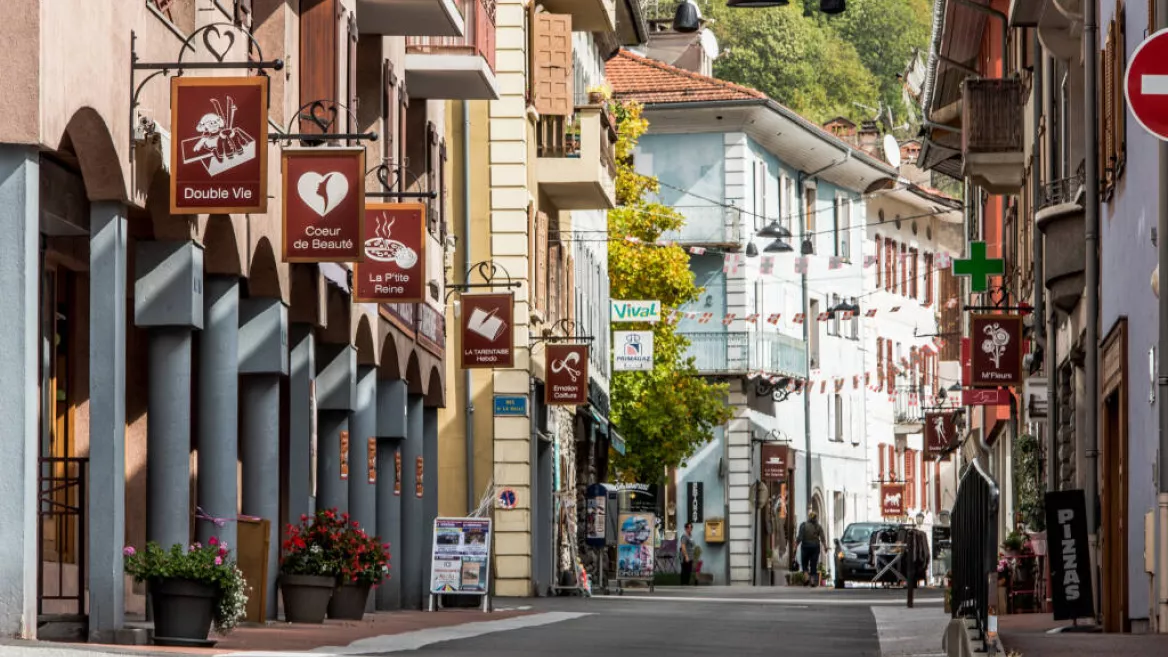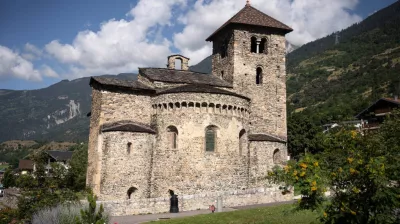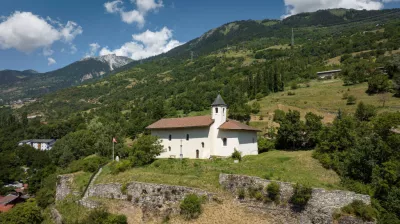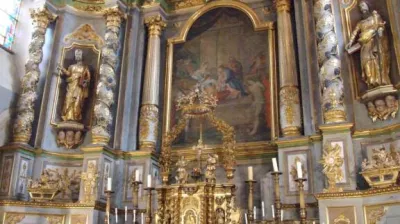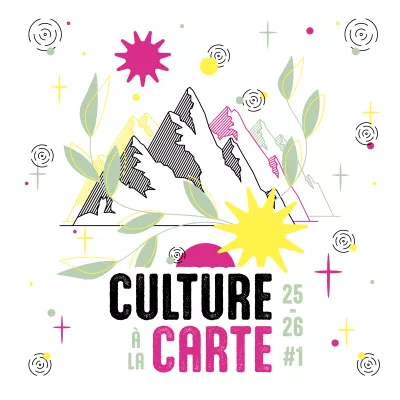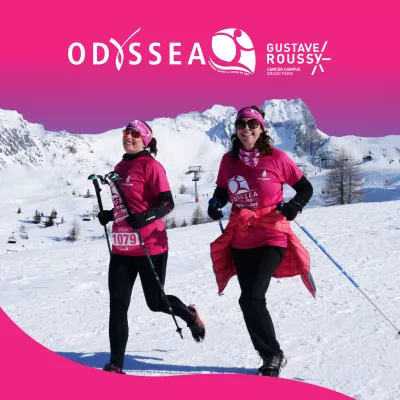Known as Axima during the Roman Empire, Aime has always been a transit town, for commerce first of all and then for tourism. The small town continues the Savoyard tradition of welcoming visitors and offers a number of curiosities to discover.
Saint-Martin Basilica
The Romans envied this Tarentaise valley, conveniently located on the road linking Milan to Vienne (France). They envied the microclimate, and were already talking about the pretty little red cows (the tarine or tarentaise breed), whose milk made such a good cheese: caesum vatusicum, the ancestor of tomme.
Clever strategists, they subdued the Gallic-Ceutrons around 21 BC, and made Aime, under the name of Axima, the capital of the province of Alpes Graies, which covered part of present-day Savoie and Haute Savoie.
In addition to objects in the Pierre Borrione Museum, we still have the foundations of a Roman building from this period. Destroyed by a flood on the Ormente, the first Christians built a church on these ruins. Destroyed by fire, the builders of the year 1000 erected on the same site a jewel of Savoy Romanesque art: L'Eglise du Prieuré Saint Martin. Listed as a historic monument since 1875, it has not been a place of worship for several centuries.
Don't miss: the 13th-century frescoes in the choir, the Roman engraved stones, the semi-subterranean crypt and the temporary exhibitions.
Château Montmayeur
The original construction of this keep was a square tower protected by an enclosure.
In feudal times, the great lordly families shared the territory, and the Montmayeur family, like the Count of Savoy, was a vassal of the Holy Roman Empire.
Located at the bottom of the town, it controlled the flow of the Isère river.
With the evolution of weaponry, the medieval tower no longer fulfilled its defensive role. A main building, a turret housing a spiral staircase, and a few interior alterations turned the keep into a pleasant residence during the Renaissance. Abandoned over the centuries and finally bought back by the commune, it now houses exhibitions.
Don't miss:
On 3 levels, models, drawings and sound archives reveal the secrets of the valley's traditional buildings, from village houses to alpine chalets.
The cellar tells the story of wine-making in the Middle Ages, as well as the tools used to work the land.
In the main building, you can re-enact a scene from medieval life.
Translation game of a medieval text.
Audiovisual screen showing the "Shared Kingdom" documentary by Pascal Bellemin-Bertaz and Didier Bouillot (French and Italian versions).
Aime archaeological museum
At the summit of the ancient Gallic oppidum, with a remarkable view over the valley and surrounding peaks, the archeological museum is unique in that its exhibits are housed in a former church.
The story begins in the Neolithic and gallops right up to the present day.
The area is named after the visionary mayor of Aime, who, in anticipation of the closure of the La Plagne mines, rallied other communes around him to found the La Plagne resort.
Today, the Société d'Histoire et d'Archéologie d'Aime manages the museum's collections, which are classified as a Musée de France.
Visits and reception are provided jointly with Plagne Vallée.
The Romans envied this Tarentaise valley, conveniently located on the road linking Milan to Vienne (France). They envied the microclimate, and were already talking about the pretty little red cows (the tarine or tarentaise breed), whose milk made such a good cheese: caesum vatusicum, the ancestor of tomme.
Clever strategists, they subdued the Gallic-Ceutrons around 21 BC, and made Aime, under the name of Axima, the capital of the province of Alpes Graies, which covered part of present-day Savoie and Haute Savoie.
In addition to objects in the Pierre Borrione Museum, we still have the foundations of a Roman building from this period. Destroyed by a flood on the Ormente, the first Christians built a church on these ruins. Destroyed by fire, the builders of the year 1000 erected on the same site a jewel of Savoy Romanesque art: L'Eglise du Prieuré Saint Martin. Listed as a historic monument since 1875, it has not been a place of worship for several centuries.
Don't miss: the 13th-century frescoes in the choir, the Roman engraved stones, the semi-subterranean crypt and the temporary exhibitions.
Château Montmayeur
The original construction of this keep was a square tower protected by an enclosure.
In feudal times, the great lordly families shared the territory, and the Montmayeur family, like the Count of Savoy, was a vassal of the Holy Roman Empire.
Located at the bottom of the town, it controlled the flow of the Isère river.
With the evolution of weaponry, the medieval tower no longer fulfilled its defensive role. A main building, a turret housing a spiral staircase, and a few interior alterations turned the keep into a pleasant residence during the Renaissance. Abandoned over the centuries and finally bought back by the commune, it now houses exhibitions.
Don't miss:
On 3 levels, models, drawings and sound archives reveal the secrets of the valley's traditional buildings, from village houses to alpine chalets.
The cellar tells the story of wine-making in the Middle Ages, as well as the tools used to work the land.
In the main building, you can re-enact a scene from medieval life.
Translation game of a medieval text.
Audiovisual screen showing the "Shared Kingdom" documentary by Pascal Bellemin-Bertaz and Didier Bouillot (French and Italian versions).
Aime archaeological museum
At the summit of the ancient Gallic oppidum, with a remarkable view over the valley and surrounding peaks, the archeological museum is unique in that its exhibits are housed in a former church.
The story begins in the Neolithic and gallops right up to the present day.
The area is named after the visionary mayor of Aime, who, in anticipation of the closure of the La Plagne mines, rallied other communes around him to found the La Plagne resort.
Today, the Société d'Histoire et d'Archéologie d'Aime manages the museum's collections, which are classified as a Musée de France.
Visits and reception are provided jointly with Plagne Vallée.
Prices
Free access. Self-guided tour of the three buildings (summer period): €4 per building (except for the museum, which is free in summer 2025)
Guided tour of the buildings (outside the summer period): upon request in advance and subject to guide availability.
Guided tour of the buildings (outside the summer period): upon request in advance and subject to guide availability.
Opening
From 01/07 to 30/08.
Basilique Saint-Martin & Château Montmayeur: Tuesday to Saturday, 10am to 1pm and 2.30pm to 6pm
Musée archéologique: Wednesday to Friday, 10am to 1pm and 2pm to 5pm.
Basilique Saint-Martin & Château Montmayeur: Tuesday to Saturday, 10am to 1pm and 2.30pm to 6pm
Musée archéologique: Wednesday to Friday, 10am to 1pm and 2pm to 5pm.
Historical Aime
1139 avenue de Tarentaise Aime
73210 Aime-la-Plagne
73210 Aime-la-Plagne
Altitude
700m
La Plagne Vallée

